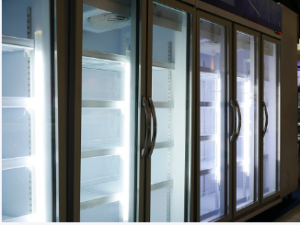Commercial refrigeration units are essential in businesses such as restaurants, bars and grocery stores that serve food. Finding the ideal unit depends on space requirements and the types of items sold – your business needs to make informed decisions when choosing its supplier.
 Regular maintenance is crucial to keeping your system operating efficiently. Clogged coils strain your compressor, increasing energy costs and the risk of system failure.
Regular maintenance is crucial to keeping your system operating efficiently. Clogged coils strain your compressor, increasing energy costs and the risk of system failure.
Refrigerators
Refrigerators are commercial refrigeration Adelaide units that keep cold foods like produce, meat, cheese and bread at ideal serving temperatures. Refrigerators come in all shapes and sizes, from quick-access undercounter fridges to room-sized walk-in freezers; with some even equipped with special features that help staff store items more efficiently – such as adjustable shelves, door bins or crispers; while others feature built-in drop-down doors so staff have easy access to frequently used items without opening the entire refrigerator door itself.
Most commercial refrigerators utilise hermetic systems that use either R-134a or R-404A as primary refrigerants and must meet energy efficiency Eco-design requirements that forbid high GWP fluorinated greenhouse gases to be included as primary refrigerant circuit components. Since July 2018, new units must adhere to energy efficiency Eco-design requirements prohibiting such use in their primary refrigerant circuit.
These devices are widely utilised for storage and merchandising in retail food stores, supermarkets, and convenience stores. They may be self-contained or connected to an external condensing unit.
Freezers
Commercial freezers come in all shapes and sizes to meet the unique requirements of any business. Ranging from quick-access undercounter units to room-sized walk-in freezers, there’s sure to be something ideal for any application.
An effective cooling system that utilises vapour compression technology maintains a freezer’s temperature. A curly pipe on the back of the freezer contains special liquid that evaporates readily and is connected to a pump that draws in vapour from that pipe and pushes it into another curly pipe at the rear of the fridge – creating pressure between molecules which makes molecules stick together and removes heat away from its source, similar to how sweat floats off when you work hard.
Upright freezers resemble home refrigerators in appearance but differ by having one or two outside doors and three to seven shelves for food storage. Their small footprint makes them attractive; food can be removed. Unfortunately, however, uprights do not retain cold air as efficiently due to energy loss each time their doors are opened compared with chest freezers.
Commercial freezers that have earned the ENERGY STAR label typically consume 20 per cent less energy than their standard counterparts. These models have been tested to maintain food at specific temperatures in hot kitchen environments with frequent door openings, featuring ECM evaporator/condenser fan motors, hot gas anti-sweat heaters, and high-efficiency compressors among their components.
Deli Cases
Does your restaurant, deli, or grocery store sell cheeses, salads, cold cuts, or prepared sandwiches? A deli case provides a quick and effective way to display these items efficiently. These refrigerated glass-fronted cases usually feature curved shelves to showcase products while tempting customers to purchase. Additional storage space and an easy restocking mechanism allow easy replenishing as well. Some models even include a different base at the bottom with room for takeaway containers, bags and labels if required.
Commercial refrigeration Adelaide needs and applications vary based on your business needs and applications, with gravity coils typically utilised to keep foods at an ideal serving temperature. At the same time, other forms, such as air curtain use, have proved more successful for delicatessen products like cheese.
Hillphoenix QTM multi-deck self-service deli displays come with either flat or curved glass options and multiple lengths, and their front access lines up seamlessly with any SSF-RG case (SSFM-RG or SSFS-RG), creating a continuous department look and offering top mount for service. Single deck refrigerated deli cases also exist with either flat or curved glass and various shelving options; some models feature sliding lid self-service while Coolgenix secondary cooling technology helps lower product temperatures for energy savings as well as providing energy savings while some models feature sliding lid customer self-service and Coolgenix secondary cooling technology which keeps product temperatures lower while delivering energy savings; you may even come across units with dedicated freezer sections!
Drop-In Coolers
With such an expansive variety of commercial refrigeration Adelaide solutions available to you, it is easy to tailor the space to the unique requirements of your business. From quick-access undercounter units to room-sized walk-in freezers, there will surely be the ideal model for every application!
Reach-in refrigerators are typically measured by their storage space requirements based on section number (e.g. one-section coolers offer the least storage, while three-section units provide the most). Open-air bottle coolers differ by being measured based on capacity rather than section count – one case of beer holds about 24 beers, so when selecting your unit size, keep this in mind when making your selection.
Back bar coolers keep bottles cold so bartenders can serve thirsty patrons quickly. These units typically feature two or three sections and come in various widths to meet any need for chilling beverages throughout the day and night. Your bottle count should help determine which size fridge best serves your back bar refrigeration needs.
